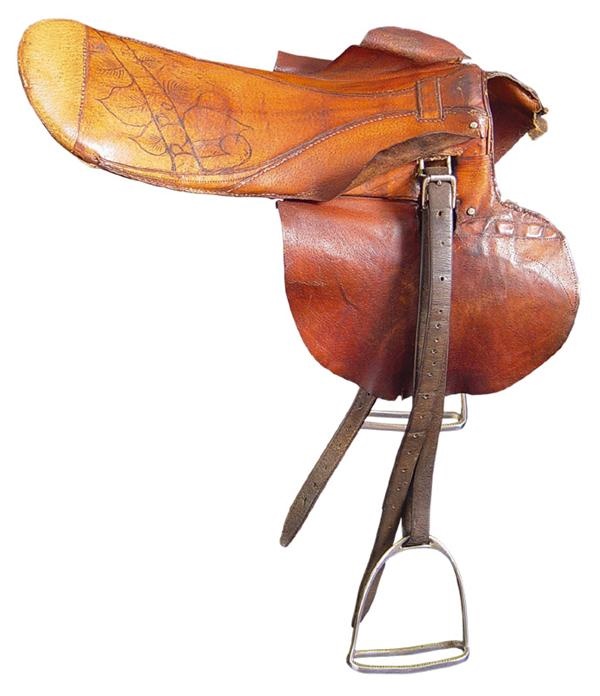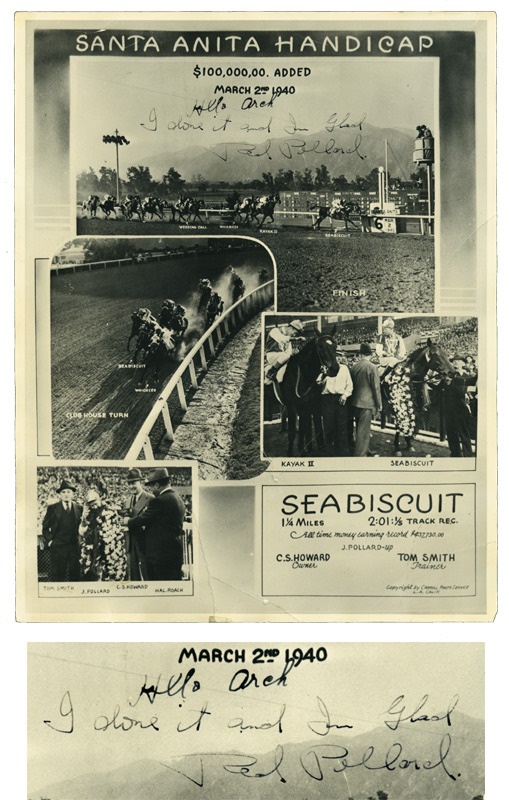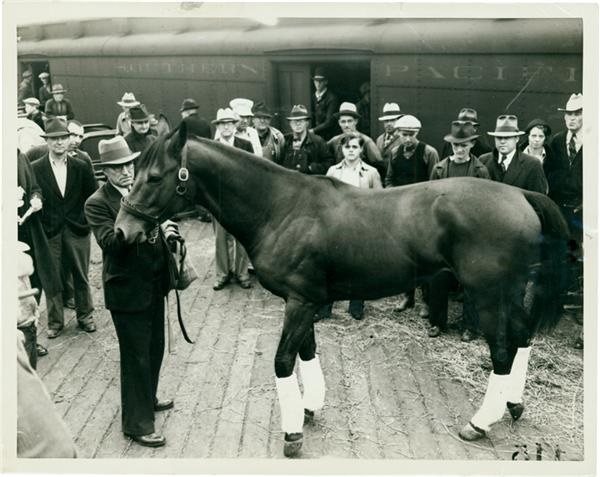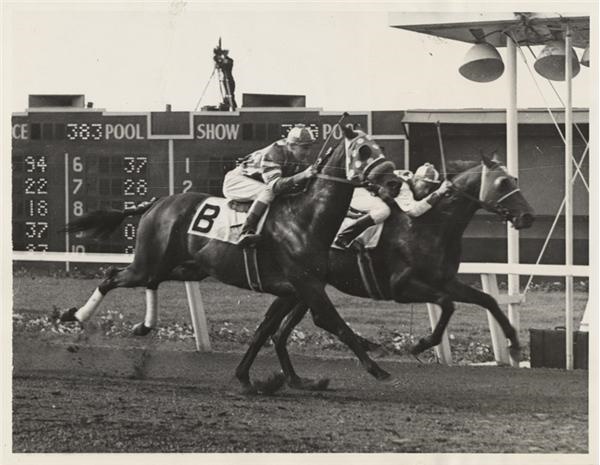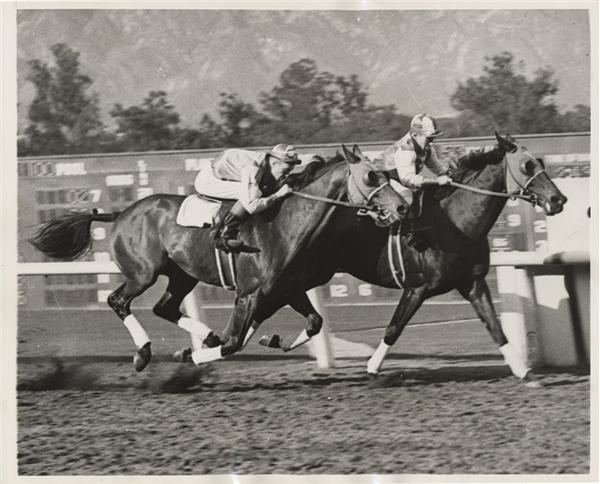Consign Your Best Items with Lelands. We Also Pay Cash on the Spot! Learn More Here.
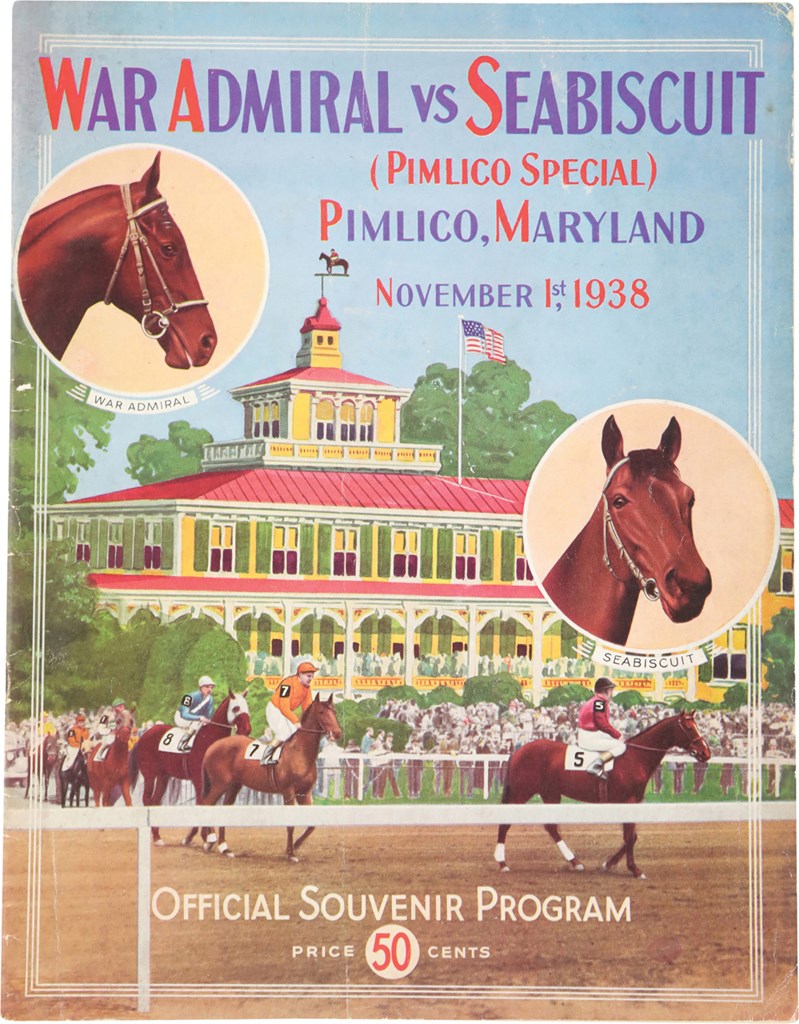
1938 War Admiral vs Seabiscuit Official Souvenir Program
<p>"I've seen football games and World Series shows and heavyweight fights that left goose pimples all over my frame. But I've never quite had the thrill that came when this race started," said Grantland Rice. The dean of American sportswriters was referring to the match race, billed as The Race of the Century, held on November 1, 1938, between War Admiral and Seabisquit at Pimlico racetrack in Baltimore, Maryland. Displayed is the Official Souvenir Program for the iconic race. In 1937, War Admiral won the Triple Crown and five other races and was undefeated that year, while in '37 Seabisquit won 11 of 14 races and was the country's leading money winner, edging War Admiral, by $168,642 to $166,500. Each horse was named as Horse of the Year. The prestigious <em>Turf</em> <em>and Sports Digest</em> gave its sportswriters' award to War Admiral, while <em>Horse and Horseman</em> magazine awarded its Horse of the Year Award to Seabisquit. The racing public was anxious for the two horses to meet, but a number of attempts to have the horses race against each other resulted in cancelled events. Finally, Alfred G. Vanderbilt, the Vice-President of the Maryland Jockey Club and a member of the wealthy Vanderbilt family, used his considerable influence to schedule the race. The two horses raced in a one and three-sixteenths mile contest on the Pimlico's dirt track. Both horses had the blood of the great Man 'o War, War Admiral as a "son" and Seabisquit as a "grandson". Red Pollard, Seabisquit's normal jockey was injured, and Georgie Wolff took his place. War Admiral was ridden by his regular rider, Charley Kurtsinger. War Admiral was the decided favorite, with odds of 1 to 4, while Seabisquit was 2 to1. In a mysterious development before the race, the track's regular starting bell was found damaged and unable to be used and Seabisquit's trainer, Tom Smith, prevailed upon the race starter to use his own starting bell, a bell with which Seabisquit was very familiar. Possible as a result of the familiar bell, Seabisquit, normally a horse who made late chargers from behind to win, took a lead right away. Later, War Admiral closed, and the horses were neck-and -neck before Seabisquit pulled ahead at the end to win by four lengths. The race program measures 10" x 13" and has 44 pages. Included in the program are extensive, detailed write-ups on each of the horses, along with many photos of each contestant, with each horse's write-up at least seven, whole or partial, pages long. Also in the program are articles on: Man 'O War, the rules of the match race, and the Maryland Jockey Club - and Pimlico. The program is in very good to excellent condition, with light creasing on the spine and corners. The cover features a bright, vivid description of the Pimlico Clubhouse and the stars of the match race. This program is a valuable memento of what Grantland Rice called, "...one of the greatest match races in the ancient history of the turf."</p>
Past Sports Card, Memorabilia, Non-Sports Card and Collecitble Auction Items
Other past auction items that may be of interest to you.

